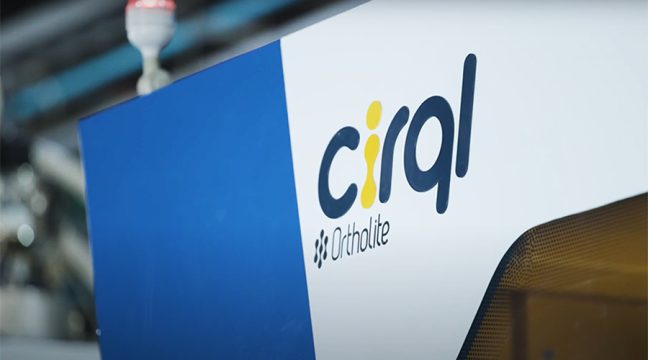Johnson Outdoors Inc. reported sales for the third quarter fell 18.6% to $114.9 million from $141.2 million in the prior year period. Income from continuing operations reached $9.0 million, or 98 cents a share, versus $7.9 million, or 85 cents, a year ago, a gain of 13.9%. Cost savings and tax benefits offset the negative impact of declining sales on profitability.
“We have made significant progress in reducing costs and improving efficiency, while protecting our leadership positions in a very challenging marketplace. Importantly, long-term restructuring initiatives are transforming the way we do business to ensure more resilient operations and stronger, more competitive businesses which we believe will be better positioned to deliver sustained profitable growth and enhanced shareholder value in the future,” said Helen Johnson-Leipold, chairman and chief executive officer.
Cost Reduction Update
On December 4, 2008, the company announced comprehensive cost-reduction plans which included an aggressive $20 million cost savings target, lower capital spending and significant reduction in peak working capital. At the end of the third quarter: Johnson Outdoors said cost savings efforts were progressing on track and in line with expectations. For the quarter, operating expense decreased 14% from the prior year third quarter.
Working capital was $124.6 million at quarter-end, reflecting a $47 million (27%) decline compared to the prior year quarter as net inventory levels dropped 36% from the previous year quarter. Capital spending was down 38% year-over-year.
Third Quarter Results
Third quarter sales historically reflect customer inventory replenishment due to consumer demand during the primary retail selling period for the company's warm-weather seasonal outdoor products. Total net sales declined 18.6% compared to the prior year quarter, due largely to economic conditions in key markets. Key factors behind the results were:
Marine Electronics revenues were 15.8% below last year due primarily to continued weakness in domestic and international boat markets.
Watercraft sales were 26.4% below the prior year due to lower customer reorders, unfavorable currency translation of 3.4% and continued scaling back of distribution in non-core channels.
Diving revenues were down 11.3% due to weak economies in key markets and unfavorable currency translation of 6.7%.
Outdoor Equipment sales compared unfavorably by 24.9% to last year due primarily to a decrease in military tent orders and commercial tent market weakness.
Total company operating profit of $10.6 million for the third fiscal quarter compared unfavorably to operating profit of $14.6 million in the prior year quarter. Key factors contributing to the comparison were:
Lower sales in all businesses, partially offset by benefits realized from cost savings efforts.
Charges of $1.4 million in the current year quarter associated with the restructuring of Watercraft operations.
Reversal of bonus and profit sharing accruals of $3.2 million in the prior year quarter.
The company reported income from continuing operations of $9.0 million, or $0.98 per diluted share, during the third fiscal quarter, compared to income from continuing operations of $7.9 million, or $0.85 per diluted share, in the same quarter last year. State income tax credits related to recent expansion of Humminbird(r) operations in Alabama added $1.4 million to net income for the current year quarter. A deferred tax valuation allowance benefit of $2.2 million also favorably impacted net income this quarter. Interest expense for the third quarter increased $1.0 million over the prior year quarter due to non-cash accounting charges related to an interest rate swap.
In June 2009, the company announced it was consolidating all domestic Watercraft production and business and customer support services in Old Town, Maine and closing its Ferndale, Washington facility as part of an initiative to significantly reduce cost and complexity, optimize synergies and assets, strengthen competitiveness and improve profitability for the future. Consolidation is anticipated to result in annual cost-savings of more than $4 million going forward. Costs and charges associated with the action are estimated to have a negative impact on earnings per diluted share of between $0.16 and $0.20 in the fourth fiscal quarter of 2009.
Year-To-Date Results
Net sales in the first nine months of fiscal 2009 were $291.2 million versus $339.0 million in the same nine-month period last year, a decrease of 14%. Key drivers in the year-to-date period were:
Lower sales in all key markets due to weak economic conditions. Unfavorable currency translation of 3.4%.
Total company operating profit was $11.2 million during the first nine months of fiscal 2009 compared to operating profit of $13.6 million during the prior year-to-date period. Income from continuing operations for the first nine months of the year was $4.5 million, or $0.49 per diluted share, versus income of $5.0 million, or $0.55 per diluted share, in the first nine months of the prior year. Primary drivers behind the year-to-date comparison were:
Lower sales in all key markets.
Improved operating efficiency and aggressive cost savings efforts, which helped offset the impact of lower sales and unfavorable product mix on margins during the period.
Increased interest expense of $3.2 million pre-tax due to $2.1 million in non-cash accounting charges related to an interest rate swap and the increase in the company's bank term debt interest rate.
Favorable impact from state tax credits and deferred tax valuation allowance.
Other Financial Information
The company's debt level was $60.8 million at the end of the third quarter versus $70.0 million at the end of the prior year quarter, and debt, net of cash, was $26.9 million at the end of the current quarter versus $47.7 million at the end of the previous year quarter. Depreciation and amortization was $8.0 million year-to-date, compared to $7.4 million during the first nine months of the prior year. Capital spending totaled $5.2 million during the first nine months of fiscal 2009 compared with $8.4 million in same period in 2008.
“Strict inventory management and production planning processes, along with disciplined cash management and spending controls throughout the year have helped drive cost and inefficiency out of the operations, improve our profitability profile overall and strengthen the balance sheet,” said David W. Johnson, vice president and chief financial officer.










